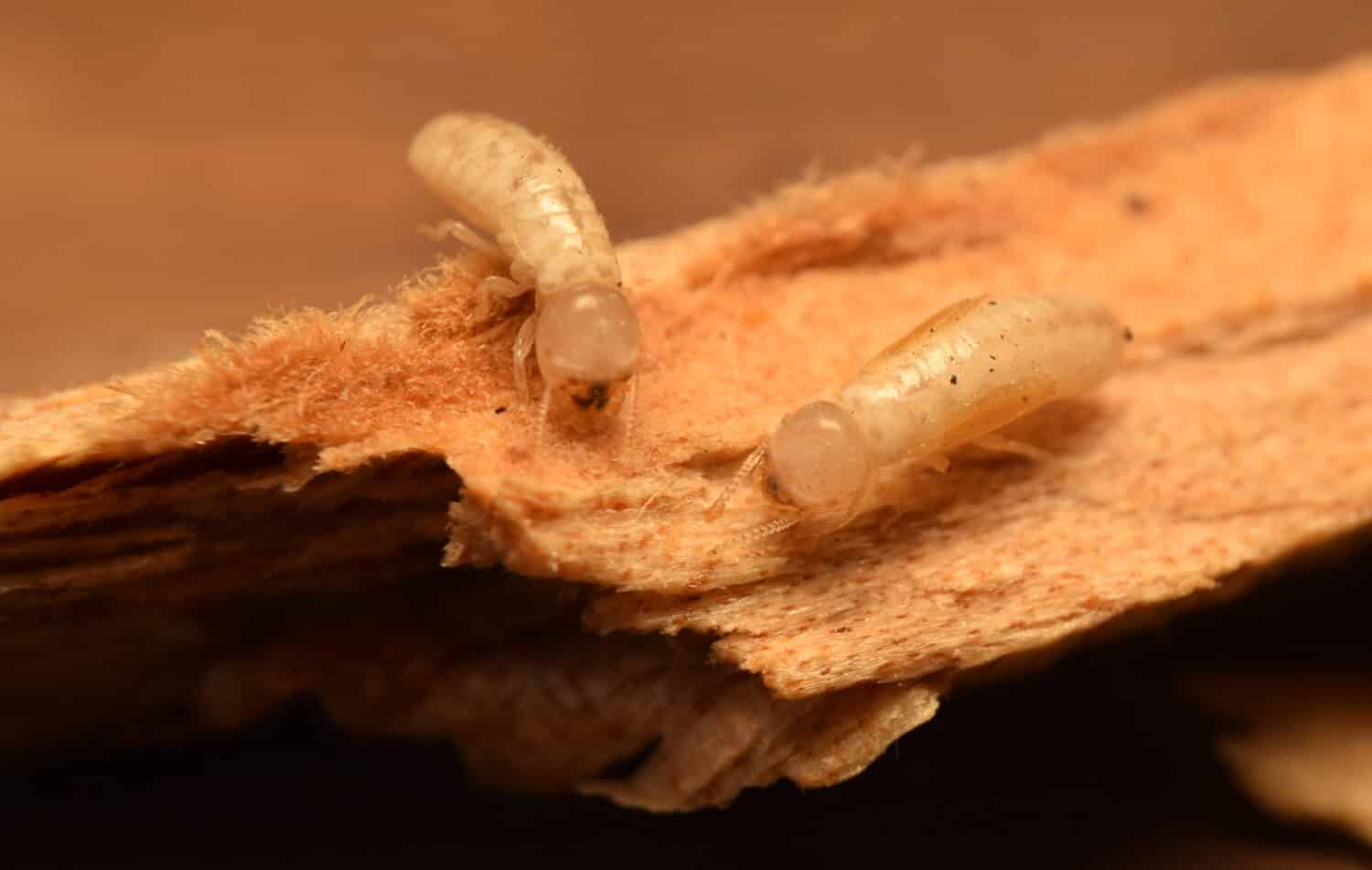The world’s animals possess unique, interesting diets that can include some seemingly inedible selections. Below, learn about the different types of animals that eat wood and what benefits it offers them.
Before getting started, however, knowing that wood can mean many things is important. Many of the animals on this list that do eat wood won’t go out of their way to gnaw on an entire tree. Instead, they typically just eat portions of different woody plants, such as the bark.
Ready to learn more? Let’s dive in.
1. Termites
When you think of animals that eat wood, termite is likely the first critter to come to mind. Termites are small insects that eat a variety of decaying plant matter, from leaf litter to wood. They are quite similar to ants, from their appearance to their social hierarchy. This has earned them the name of “white ants,” which references their pale coloration.
In order to digest such materials, termites have a unique symbiotic relationship with the microbial ecosystem present in their gut. These microorganisms provide the necessary enzymes to break down decaying plant matter, providing the termites with a method of digestion. Many of the species found within the termite’s gut cannot be found anywhere else on the planet. They are not born with this uniquely cultured gut, but rather, they develop it.
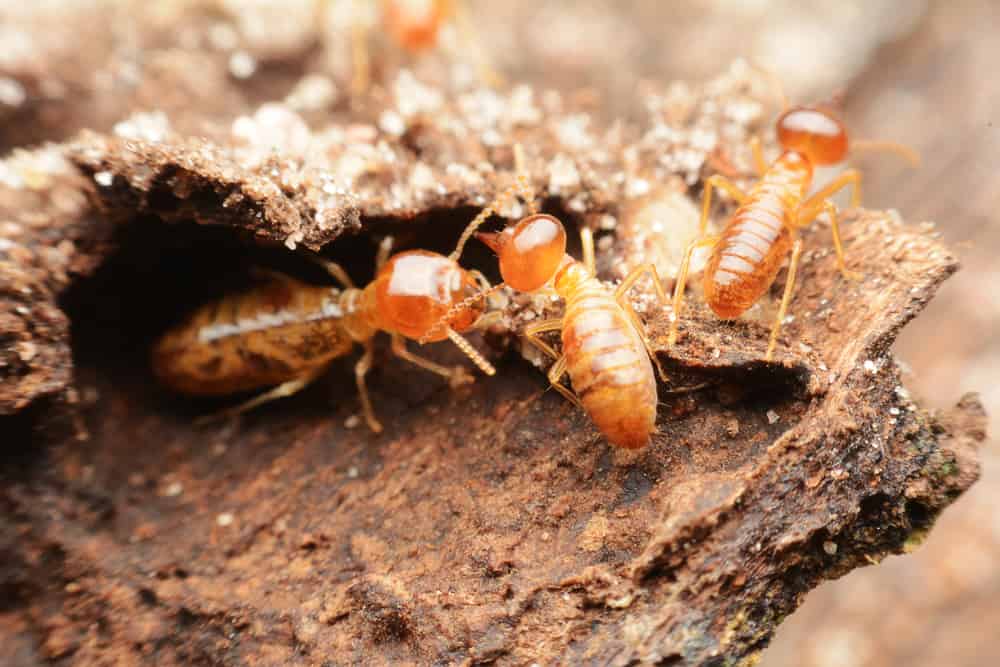
Termites have specialized gut microorganisms that help them consume decaying plants.
©BEJITA/Shutterstock.com
2. Camels
In order to survive the harsh environment of the arid deserts that camels call home, they have developed some neat adaptations. This includes the ability to eat and digest wood. With their strong teeth, these interesting animals are able to crush wood for digestion. They are ruminates and will digest their food through a series of processes.
Camels may also eat different parts of wood. In the wild, they are known to strip bark from trees and eat it. They will also eat woody plants, like shrubs and even thorn bushes.

Camels have many unique adaptations that help them survive, including the ability to eat wood.
©kaikups/Shutterstock.com
3. Deer
It might be surprising to think of a deer eating wood, but it actually can be a large part of their diet. Food in the deer’s ecosystem is often abundant in the spring and summer months. From leafy plants to seeds to mushrooms, there is no shortage of vegetation available to the deer.
However, during the winter months, this often changes greatly. This is especially true in the more northern extents of their range. During this time, the deer’s stomach is adapted to handle woody browse compared to leafy plants. This can include twigs as well. While this may not be the deer’s preferred food, eating wood can help keep them alive when no other food sources are available.
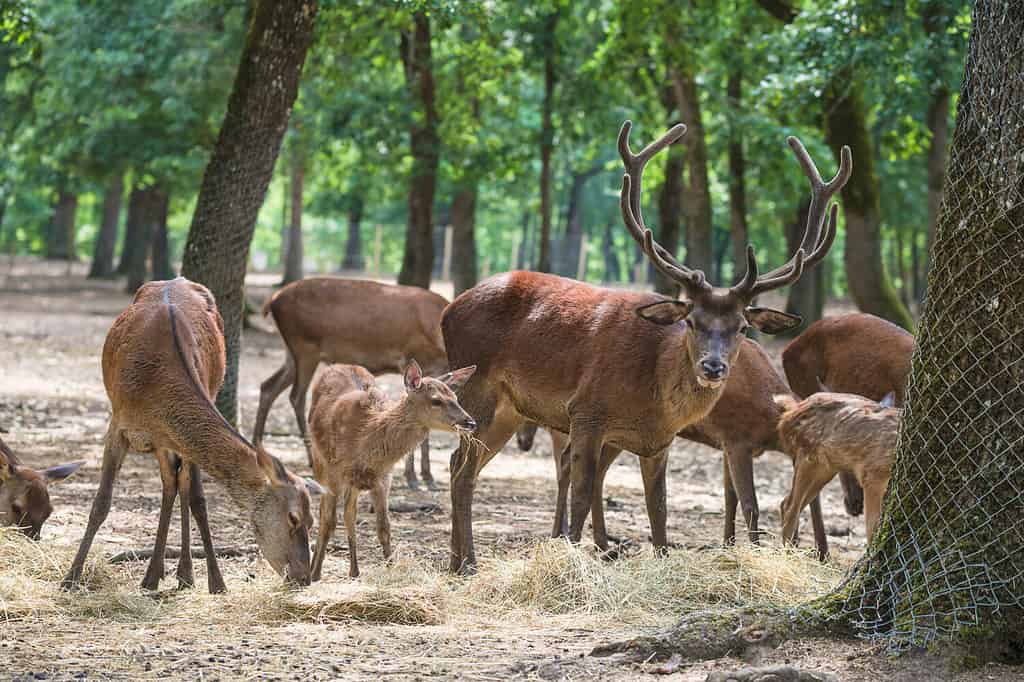
Deer may eat twig tips and bark during the winter when food is scarce.
©Stsvirkun/Shutterstock.com
4. Beavers
The beaver is known for gnawing on wood to create its dams. However, did you know that beavers are also a great example of animals that eat wood? It’s important to know, though, that beavers don’t eat wood in the sense that you might originally think of. They also don’t eat the trees they cut down.
Instead, beavers eat what is known as the cambium layer of wood. This part of the tree trunk grows, and it is situated right beneath the bark. It is often a little softer or even fleshy, with higher moisture content. This is due to the important cells located in this layer. As a result, it’s important to distinguish between the fact that while beavers eat wood, they don’t eat trees—they eat a small layer beneath the bark.
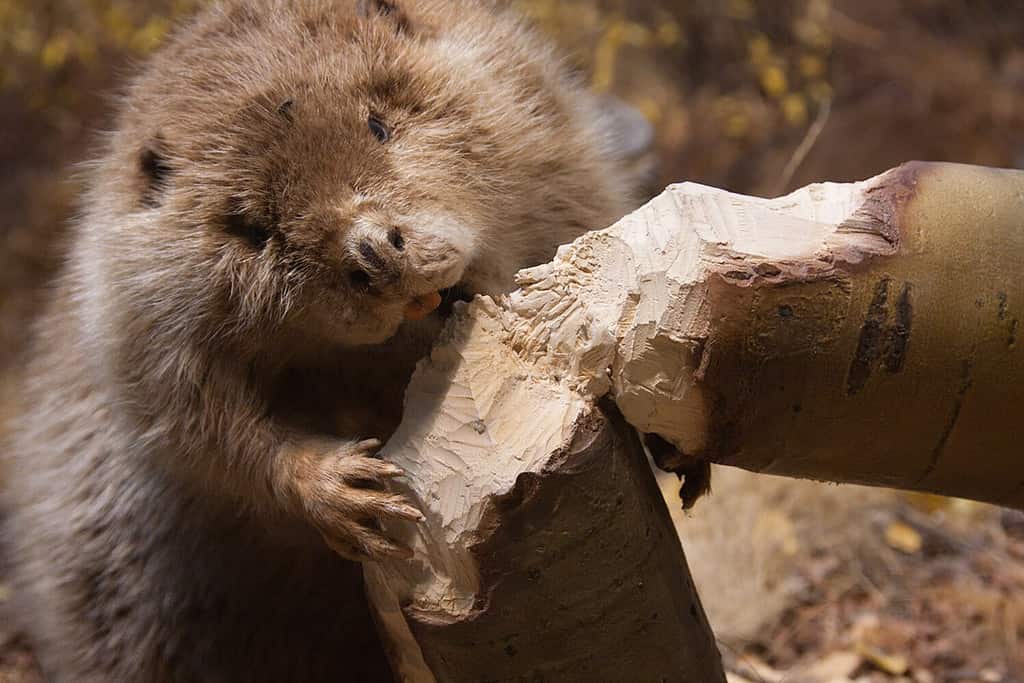
Beavers don’t just build their homes with wood. They also eat the thin layer beneath the bark known as the cambium.
©Procy/Shutterstock.com
5. Rabbits
When it comes to animals that eat wood, rabbits are quite similar to deer. During the spring and summer, these small mammals are able to forage to their heart’s content. They often eat clovers, grass, and other plants. They may consume a small amount of twigs and bark during this time.
It is during the winter months that their diet takes on a significantly more woody portion due to the lack of fresh vegetation. However, like most animals, excluding termites, rabbits don’t usually eat all of the wood available but rather bark and twigs.
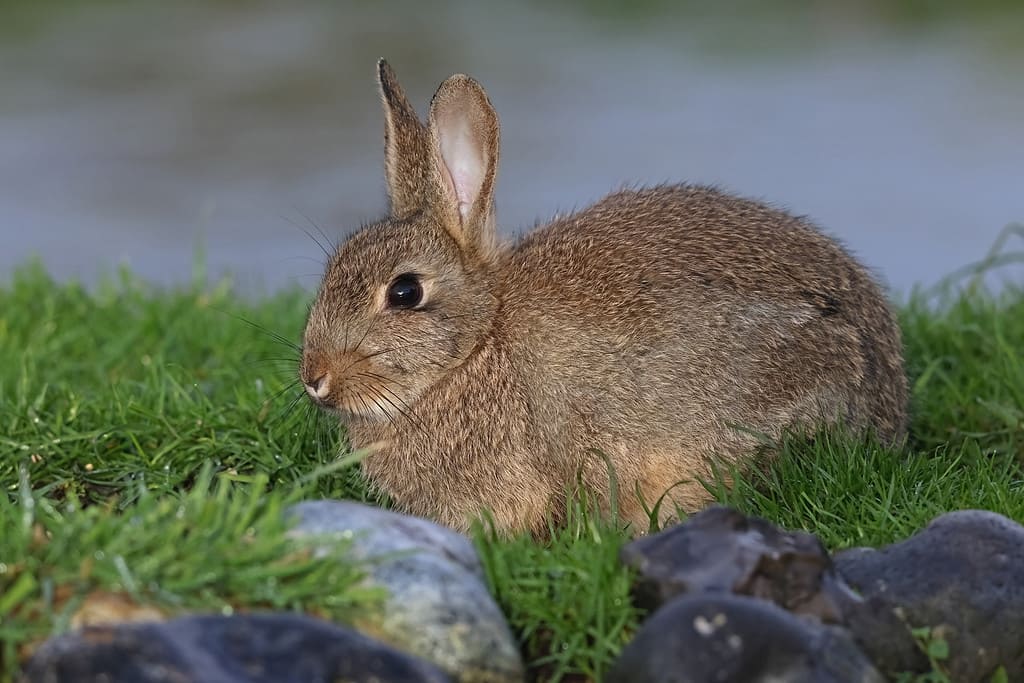
Like deer, rabbits may switch to a woody browse when plants are less available.
©neil bowman/iStock via Getty Images
6. Bark Beetles
The bark beetle is a small beetle that eats, lives in, and reproduces in trees. Different species will focus on different parts of the trees, with this also varying based on their lifetime. For instance, when it comes time to lay eggs, females will chew deeper into the chew’s bark pass the layer that contains sugar. However, other times, they may be closer to the surface of the bark, if not on the surface. They may eat twigs on the trees, as well as the softer inner layers of the bark, like the cambium layer.

Bark beetles and wood borers may live their lives inside or around trees.
©Jay Ondreicka/Shutterstock.com
7. Porcupine
If you live in certain northern regions, you may have had issues with porcupines eating your deck during the winter. This is because porcupines have a diet that is almost entirely made up of twigs and bark during the winter months when less leafy plants are available.
However, unlike other animals who rely on wood out of necessity, the porcupine also just tends to enjoy wood—especially processed wood. Paints, stains, and even wood glues can contain salt, which the porcupine favors. This is why they are often seen gnawing on man-made structures like decks. Even though this wood doesn’t offer the nutritional benefits of twig tips and bark, it does contain the salt they enjoy.
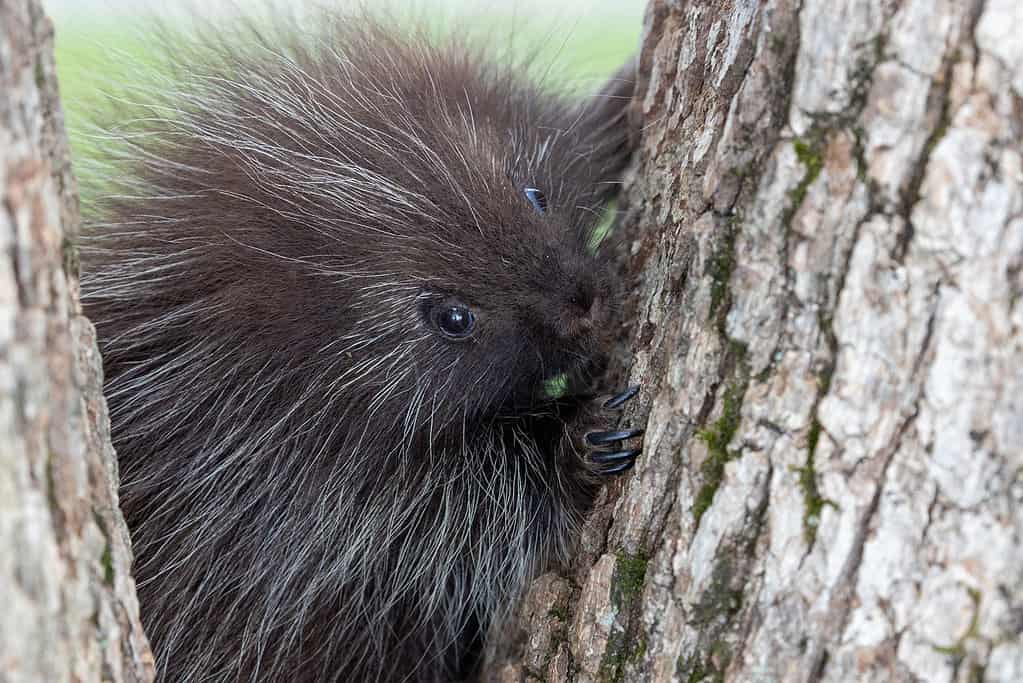
Porcupines not only eat twigs and barks but will also eat processed wood for the salt.
©iStock.com/Sandra Mitchell
Thank you for reading! Have some feedback for us? Contact the AZ Animals editorial team.

